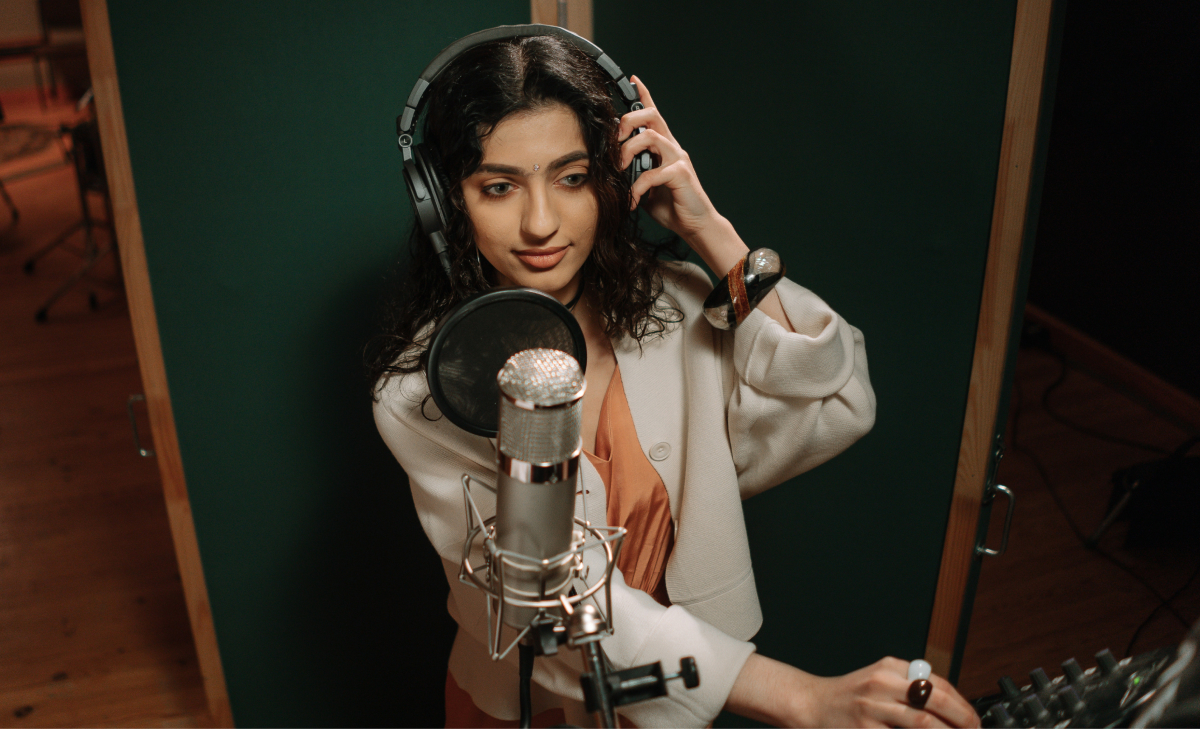Audio 101: A beginner-friendly guide to choosing the best mic for videos recordings


Although we’re all for creating high-quality content, we also recognize that sometimes the best way to get started is by just getting started and worrying about the particulars further down the road. With that being said, improving your audio quality for your videos may have crossed your mind once or twice in the past. If you’re finally ready to make the jump to upgrade to an external microphone, we can help with this part of the journey. Keep reading to learn more about shopping for the best mics for video recording.
Different types of mics
Like most technology that has waltzed its way into our lives, there are thousands of microphones on the market. But they aren’t created equally. When upgrading from internal mics on your video recording device to an external mic, it’s essential to understand key distinctions between the two most popular microphones for audio recording.
When shopping for a mic to record audio at home, there are generally two types you will encounter—condenser and dynamic mics. Without getting into the confusing details and technical jargon, here are the key differences between the two.
Condenser microphone
In the world of vocal acting, condenser mics reign supreme due to their extreme accuracy and clarity. However, condenser mics are more sensitive, meaning they’ll pick up the slightest sound. This can work against you if you’re recording in a home with lots of background noise (i.e. noise from vents, traffic if you live in a big city). Condenser microphones also tend to require a power source which is, of course, something to be mindful of to ensure your setup can accommodate.
Our pick: Samson Satellite, $129.95
Dynamic microphones
Dynamic mics are generally more suitable for at-home voice audio recording as they block out background noise. Simply put: They’re not as sensitive as condenser mics. Some would describe a dynamic mic as having a filter built-in that picks up the sound you need and leaves behind what you don’t. In recording environments, such as an at-home studio, one may lean towards this sort of mic. Unlike condenser mics, dynamic microphones don’t require a power source to operate.
Our pick: Rode Podcaster USB Dynamic Microphone, $229
Now that you have a better idea of some of the technical aspects that you need to pay attention to when microphone shopping, it’s time to break down some foolproof ways to help you make your final decision on the best mic for your video recording needs.
When shopping…
1. Always start with your budget in mind
No matter how appealing the features of your dream microphone may be, it’s essential to let your budget be the first and final deciding factor when purchasing a microphone. After all, there’s no use in getting a state-of-the-art microphone if it means neglecting other equipment and tools that you may need more.
2. Consider the device and connectivity options
There’s no use in purchasing a microphone that you can’t use with the video camera that you own. External microphones can connect via various ports such as USB or XLR, so be mindful of this. And remember, the best mic for video recording is the one that works with your set up.
3. Understand your recording environment
Depending on the type of mic you opt for, it may be super sensitive to the sound in your recording environment. If you don’t have one particular area in your home you use to record, it may be wise to find one so you can get a mic to suit it. And, plan to record there in the future to maintain consistent sound quality.
How to pick:
To determine what area in your home may be best suited for recording, think about places that don’t get lots of foot traffic and are generally far from interruptions and unwanted noise. You may also want to try doing test recordings on a device like your smartphone to see how the areas you’re scouting sound without the help of a microphone. This may help make the decision a little more straightforward.
4. Test it out
Simply put, a microphone can check all the boxes on your list and still not be the best mic for your video recordings. You want your mic to fit your speaking voice. Think of all the distinct voices that you experience in just a 24-hour window. It’s pretty safe to say no mic will pick up any two people’s voices the same. If you have creators in your circle, don’t be too shy to ask them to test out their mics or get their opinions. Additionally, try shopping in-store and testing display mics to get a feel of how you sound with them.
Ultimately, before you buy, it’s important to consider all of the above in order to find the best mic for video recording. And remember: You don’t need a lot of fancy equipment to get started.